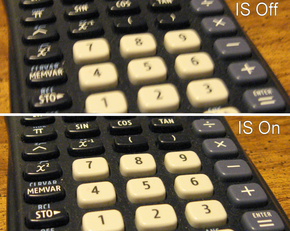Optical Image Stabilization

Optical Image Stabilization, or OIS, is used to counteract some of the disturbances caused by moving your camera or smartphone while taking photos or recording video. It works by physically moving and rotating the camera lens by a few degrees according to information it receives from the device’s sensors.
Different companies use different names for this technology. Nokia were the first to produce the first smartphone OIS sensor for their Lumia 920 phone. Today, nearly all high-end smartphones use Optical Image Stabilization for photos and videos.
Two sensors are of interest when tracking movement. An accelerometer detects the g-force associated with the current movement. This sensor is a very tiny chip that has extremely tiny (around 500 microns thin) moving parts made of silicon. The gyroscope is more of an orientation tool for your smartphone: Roll, pitch, and yaw of your phone will be automatically detected by the gyroscope. When you convert this equipment into a micro-electromechanical gyroscope, the size is in the order of a few millimeters.
Rolling shutter effects arise because a complete video frame is not recorded in an instant. Instead, the pixels are recorded in some order, either vertically or horizontally. With the camera in a state of motion, the last pixels may record a different scene than what the first pixels started with, causing a skewed and distorted image. Somewhat related, Motion Blur is the apparent streaking of rapidly moving objects, as a result of when the scene itself changes during the recording.
Optical Image Stabilization is mostly enough to address in-frame issues such as motion blur and rolling shutter effects. OIS is a tool for adressing things that for example a bigger lens and better sensor also would improve, but which are too costly, too problematic, or downright impossible to incorporate into even the most modern smartphones.
Because of the limitations in compensation angle, OIS can not compensate for the bigger amplitude motion between frames. In short, OIS can enhance quality of each individual frame, but not the overall stability of video when, for example, you are out walking holding the camera in your hand.
A gyro can be used for many things. Since its main purpose is to measure movement and rotation of the device itself, its most optimal placement is in the gravitational center of the device, although it is rarely located exactly there. Even more unfortunate, the location of the camera rarely coincides with the gyro’s location.
This proximity, or lack thereof, matters. Imagine having the gyro on the bottom edge of the phone, and the camera at the top edge. Your smartphone may make wild and sudden moves at one end, while remaining nearly still at the other. The closer the gyro is to the camera, the smaller this discrepancy becomes. Because the placement of the gyro may vary significantly, OIS instead often uses its own camera-close gyro to do its measurements. The net result of its work is an improved sharpness in motion.
Vidhance Video Stabilization technology performs both in-frame stabilization, such as rolling shutter elimination, and between-frame stabilization, stabilizing and perfecting video in natural scenarios like walking or tacking an object or person.
 Navigation
Navigation